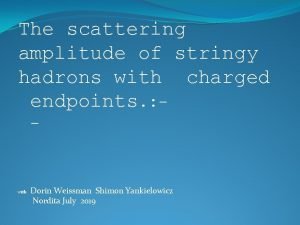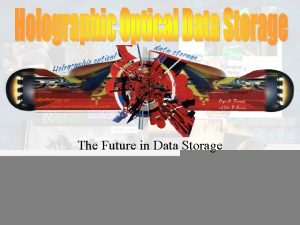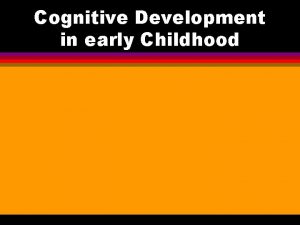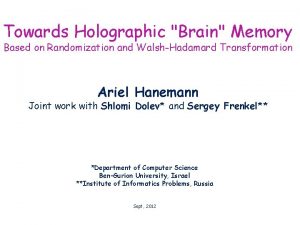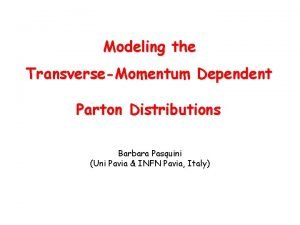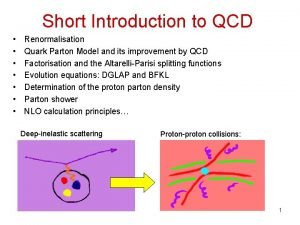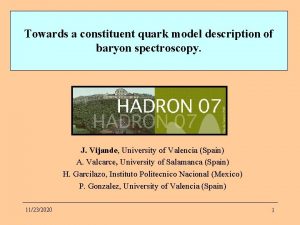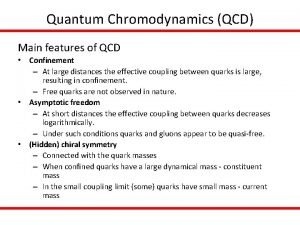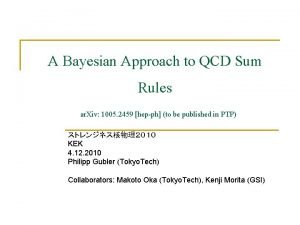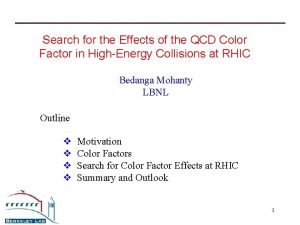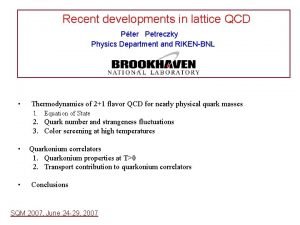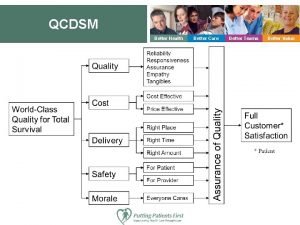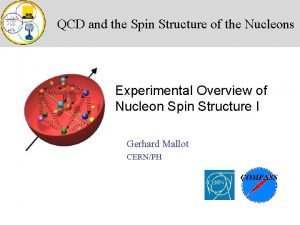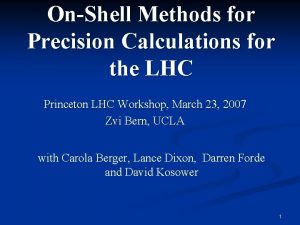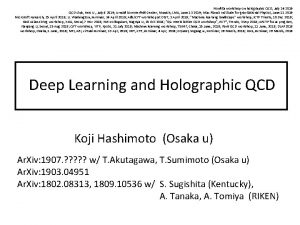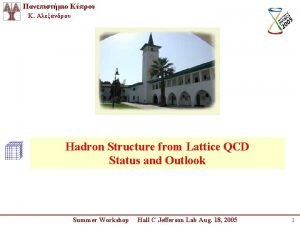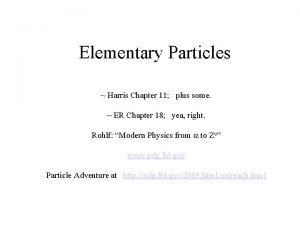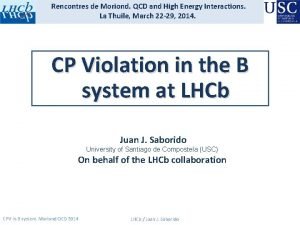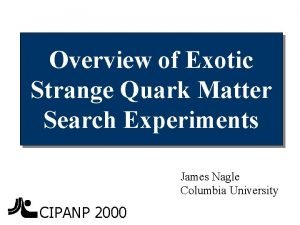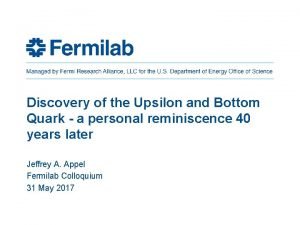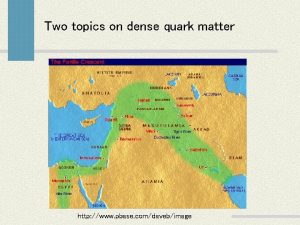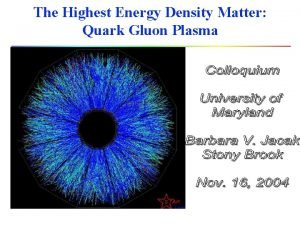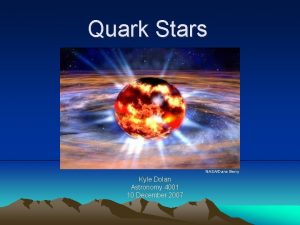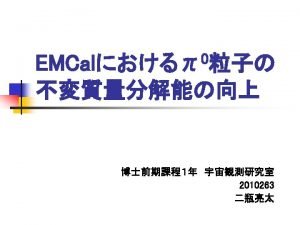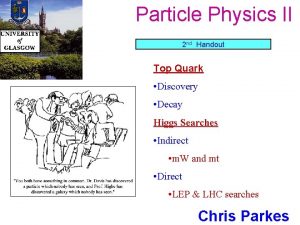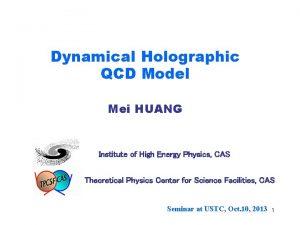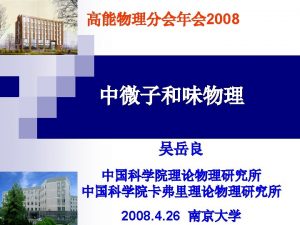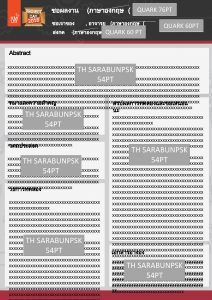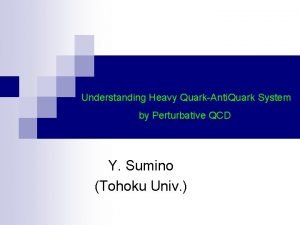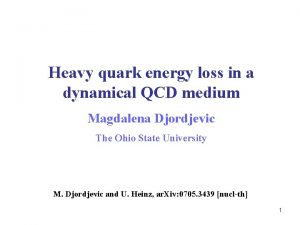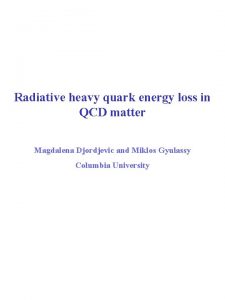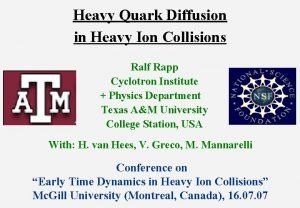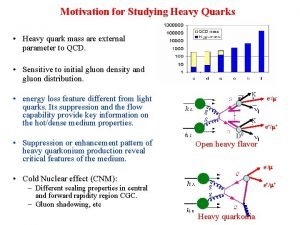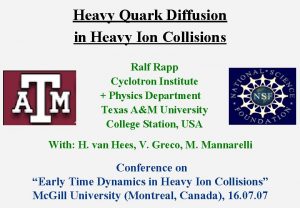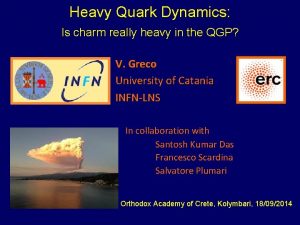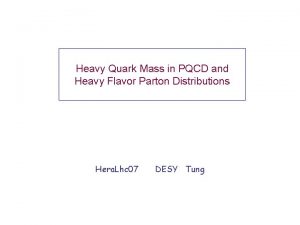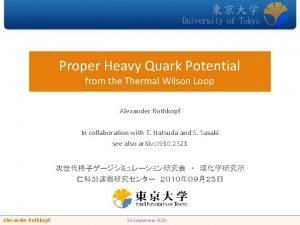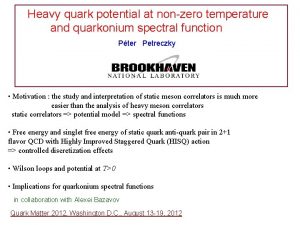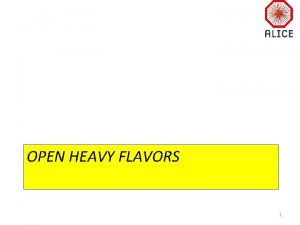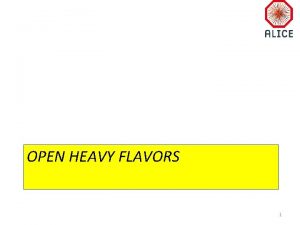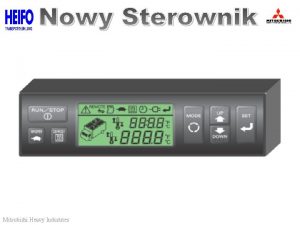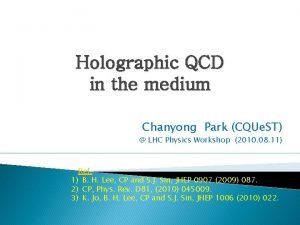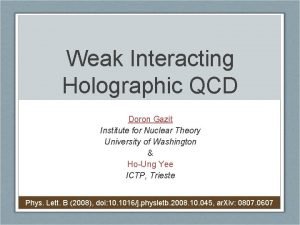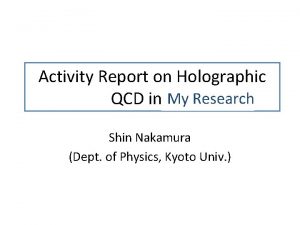Holographic QCD model from heavy quark potential Mei




























- Slides: 28

Holographic QCD model from heavy quark potential Mei Huang Institute of High Energy Physics, CAS Theoretical Physics Center for Science Facilities, CAS QCD new frontiers 2010, March 11 th 2010, YITP, Kyoto 1

Content I. III. 1. 2. Introduction Holographic QCD models Our model & heavy quark potential IV. Conclusion and Discussion Song He, Mei Huang, Qi-shu Yan, in preparation 2

I. Introduction Ad. S/CFT conjecture If it’s true for any gauge theory String theory, quantum gravity Non-Abelian gauge theory Then what’s the dual string theory of QCD? ? QCD Question: Is it possible to find a string theory dual to QCD? 3

First step, is it possible to find a 5 D holographic model of QCD? Leave the task of deriving the holographic QCD model to string theorists Dp-Dq system in type-II superstring theory (10 D) Metric structure of holographic QCD (5 D) What we can do: extract a workable holographic QCD model from the real world QCD 4

II. Holographic models Bottom-up models: hard-wall Ad. S 5 model soft-wall Ad. S 5 model: quadratic dilaton model Andreev model: negative quadratic dilaton model back-reaction model resembling QCD running coupling Top-down models: SS model, Dp-Dq model… 5

Hard-wall Ad. S 5 model: Lowest excitations: 80 -90% agreement with Exp. higher excitations: no Regge behavior 6

Soft-wall Ad. S 5 model or KKSS model Introduce a dilaton field to restore Regge behavior 7

Andreev’s model: quadratic correction O. Andreev, hep-ph/0604204 Heavy quark potential KKSS model (effectively): 8

Back-reaction model: higher-order corrections J. P. Shock, F. Wu, Y. L. Wu and Z. F. Xie, hep-ph/0611227 C. D. White, hep-ph/0701157 9

10

Pirner-Galow model: resemble QCD running coupling H. J. Pirner, B. Galow, ar. Xiv: 0903. 2701 11

Pirner-Galow model: produce heavy quark potential very well B. Galow, E. Megias, J. Nian, H. J. Pirner, ar. Xiv: 0903. 2701 12

Pirner-Galow model: however, unstable dilaton potential B. Galow, E. Megias, J. Nian, H. J. Pirner, ar. Xiv: 0903. 2701 13

III Construct holographic QCD model from heavy-quark potential Deformed warp factor in Pirner-Galow model UV: IR: 14

Dp-Dq model S. He, M. Huang, Q. S. Yan, Y. Yang, 0710. 0988 15

Our holographic model: S. He, M. Huang, Q. S. Yan, in preparation can be either positive or negative 16

Calculate heavy quark potential (standard) 17

heavy quark potential expanded at R=0 1, Coulomb part is determined by string tension 2, Quadratic and logarithmic contributions to the linear part compete with each other 18

Gravity solution of the metric Einstein-dilaton equations: 19

Gravity solution of the metric 20

1, Only quadratic corrections: cannot produce HQ potential 21

which is extracted from Pirner-Galow metric, can produce HQ potential, but the dilaton potential is unstable 22

with only logarithmic contribution, can produce HQ potential, and the dilaton potential is also stable 23

Stability analysis R(z) 24

More compact model with less parameters: two scales: L (Ad. S 5 radius) z_IR (IR cut-off) 25

26

Summary I. With only quadratic correction in the deformed warp factor, it’s impossible to fit the heavy quark potential. II. With only logarithmic correction, it can fit the heavy quark potential very well. III. The stability analysis of the dilaton potential constrains 0<c 0<0. 4. IV. More observables needed to constrain the model further. V. Work in progress (bottom-up): Heavy quark dissociation temperature, Polyakov loop, QCD EOS … VI. Work in progress (top-down): try to derive the model from top-down. 27

Welcome to KITPC program “Ad. S/CFT and Novel Approaches to Hadron and Heavy Ion Physics” From 2010 -10 -11 to 2010 -12 -03, KITPC, Beijing, China 28
 Holographic duality theory
Holographic duality theory Holographic data storage
Holographic data storage Piaget preoperational stage
Piaget preoperational stage Holographic will
Holographic will Holographic brain theory
Holographic brain theory Shratey
Shratey Quark model
Quark model Quark parton model
Quark parton model Constituent quark model
Constituent quark model Confinement qcd
Confinement qcd Qcd sum rules
Qcd sum rules Color factor qcd
Color factor qcd Qcd
Qcd Qcdsm
Qcdsm Qcd lagrangian
Qcd lagrangian Nucleon
Nucleon Qcd penrose
Qcd penrose Qcd
Qcd Qcd
Qcd Qed qcd qfd
Qed qcd qfd Rencontres de moriond
Rencontres de moriond Particle wordle
Particle wordle Quarks
Quarks Quark names
Quark names Quark gluon plasma
Quark gluon plasma Quark gluon
Quark gluon Quark astronomy
Quark astronomy Quark gluon
Quark gluon Top quark decay
Top quark decay
